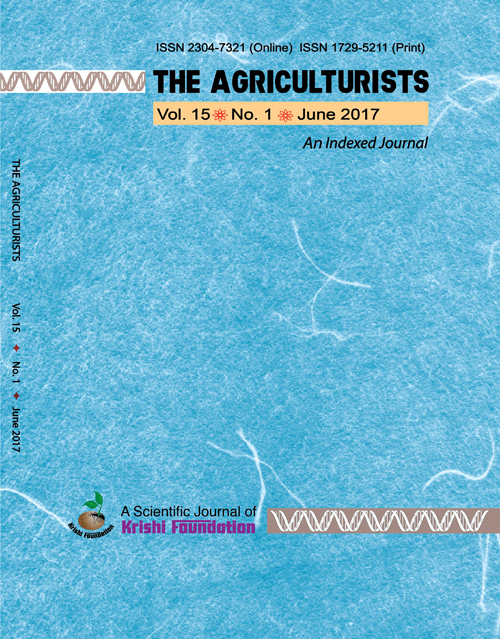Irrigation Scheduling of Rice (<i>Oryza sativa</i> L.) Using CROPWAT Model in the Western Region of Bangladesh
DOI:
https://doi.org/10.3329/agric.v15i1.33425Keywords:
Water requirement, T. Aman and Boro rice, evapotranspiration, irrigation scheduling.Abstract
Understanding of crop water requirement is essential for irrigation scheduling and selection of cropping pattern in any particular area. A study was conducted to estimate irrigation requirement and made irrigation scheduling of T. Aman (wet season) and Boro (dry season irrigated) rice in the western region of Bangladesh using CROPWAT model. Historical climate data from three weather stations in the region along with soil and crop data were used as input to FAO Penman-Monteith method to estimate reference evapotranspiration (ETo). Effective rainfall was calculated using USDA soil conservation method. The model estimated1408 mm annual ETo in the study area, of which the highest amounts of 175 mm was in April and the lowest (70 mm) in December. The average annual rainfall was 1592 mm of which 986 mm was effective for plant growth and development. The model estimated ETc of BRRI dhan49, which was 473 to 458 mm, depending on its transplanting dates from 15 July to 15 August. Rice transplanted on 15 July required no irrigation, whereas three supplemental irrigations amounting 279 mm were required for transplanting on 15 August. The CROPWAT model estimated seasonal irrigation water requirement of 1212 mm (12 spilt applications) for BRRIdhan28 transplanted on 15 January. This model has also a potentiality to make irrigation scheduling of other crops.
The Agriculturists 2017; 15(1) 19-27Downloads
232
265

